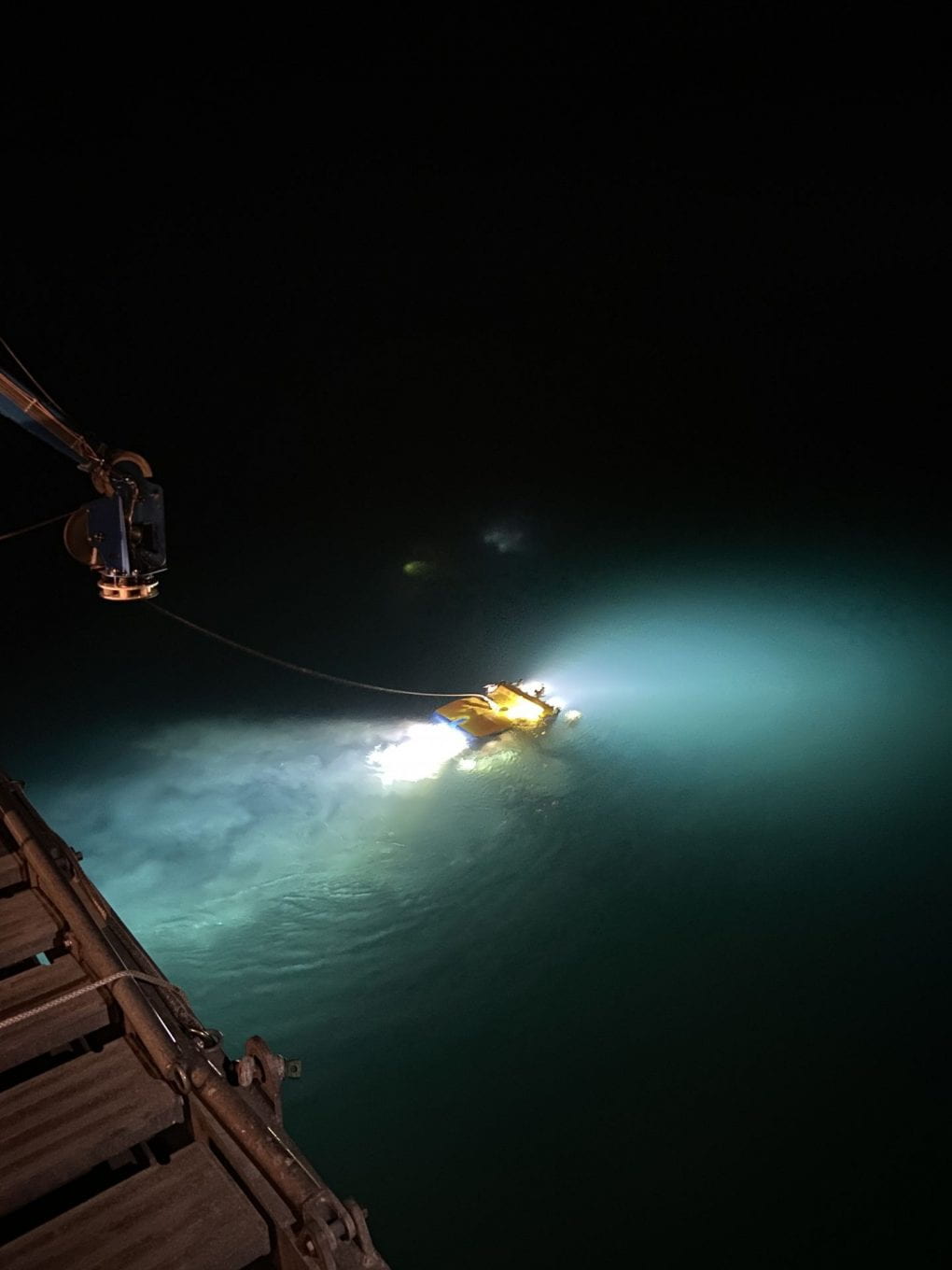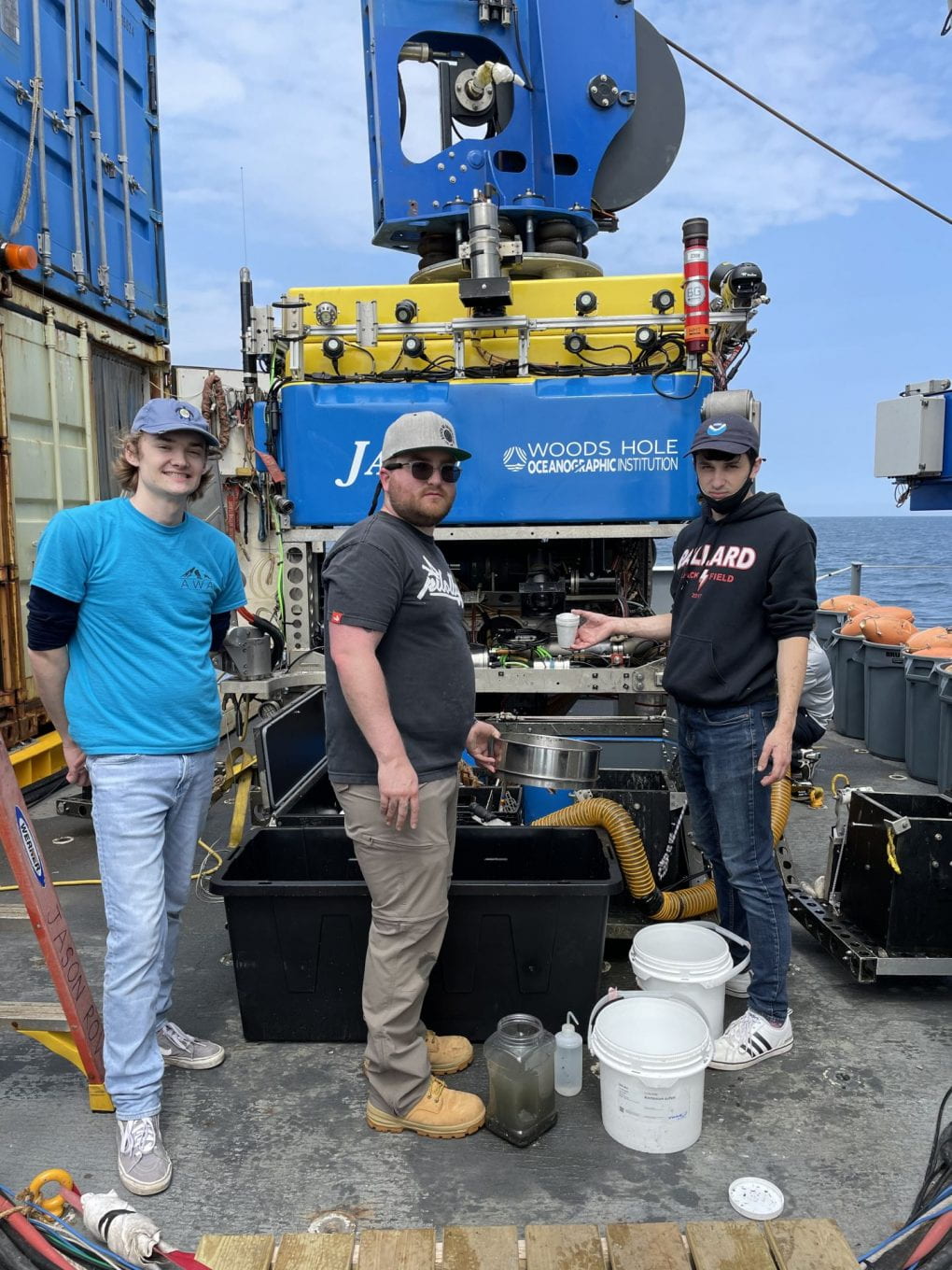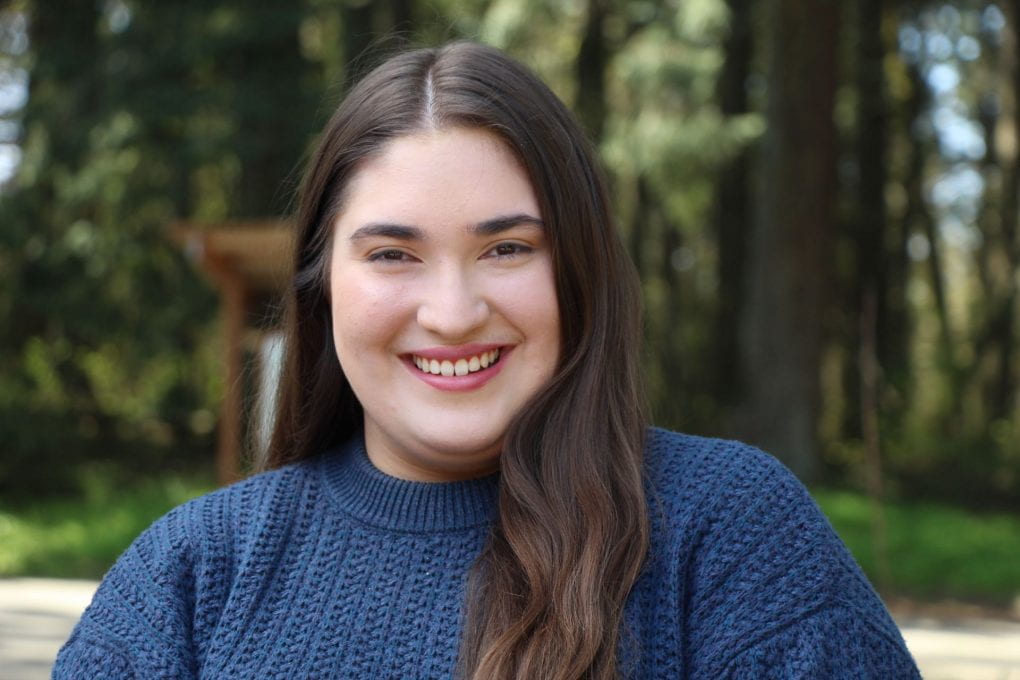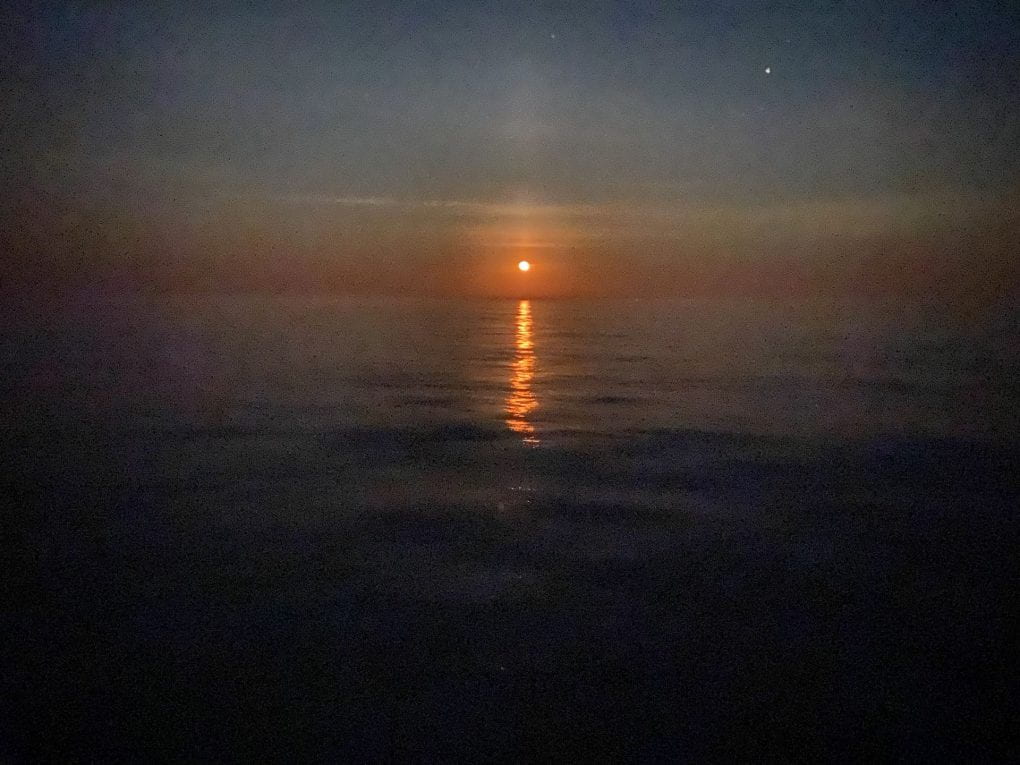June 5th, 2020
Today was the beginning of our long transit to the Florida Keys where we will be picking up the other PI (Principal Investigator) for the cruise, Dr. Craig Young from the University of Oregon. This transit is 57 hours meaning no Jason or Sentry dives for the next two days and the science party can catch up on science and sleep. Because of this, many of our team slept in today, and had a more casual approach to the workday after finishing Sentry sorting early in the morning. However, we did have a hefty list of science tasks to be done: sort tube traps, measure and dissect mussels, create highlight video clips, process carbonate rock for sponges, sort Tuffys, and animal maintenance.
As Blake Ridge was one of our deeper sites, 2160 meters, we had a new species of mussel to work with, Bathymodiolus heckerae. The three types of mussels we are collecting and processing on this cruise are Gigantitus childressi, Bathymodiolus brooksi, and Bathymodiolus heckerae. Each of these mussels are found at different depths: 400-2200 meters, 1080 – 3300 meters, and 2200-3300 meters respectively. In processing these mussels, first shell measurements of length, width, and height are taken for each individual. The shells are given to Ian Grace of NC State for geochemical analysis, and the body tissue is preserved in formalin for reproductive studies. Seen here is Caitlin Plowman (UO) dissecting B. heckerae in our dissection lab on board.
Meet a Scientist on Board
Hi everyone. My name is Caitlin Plowman. I am a PhD Candidate with Dr. Craig Young at the University of Oregon’s marine lab, the Oregon Institute of Marine Biology. I also did my bachelors and masters degrees at UO. My research focuses on the reproduction of invertebrates (animals without back bones) that live in the deep-sea. I have been fortunate enough to be on many research expeditions and absolutely love being at sea! On this research cruise, I am collecting mussel samples for my dissertation work and helping to ensure samples for our lab’s portion of the grant are collected and properly preserved. So far, I have earned the nicknames Chemical Queen because I prep and use most of our fixatives, and Mussel Serial Killer since I ask for mussel collections and then dissect them all.
Specimen Storage Showcase
With all of our samples coming from the deep sea, I’m sure everyone is curious about how we keep everything alive. The temperature difference is critical, as the deep sea is much colder than the surface. In order to combat this change in environment, we have two cold rooms on board. For shallower sites, we have one cold room at 8 degrees Celsius, and for deeper sites like Blake Ridge, we have another cold room at 4 degree Celsius. These cold rooms are where we store everything that comes up from Sentry and Jason while we work on separate tasks to ensure everything stays alive in the meantime. Each bucket and cooler filled with organisms is also fed an airline with an air stone that continually pumps oxygen into the containers. The other notable features in these rooms are having Bunjees to secure our smaller samples on the shelves, and a non-slip mat incase of spills or slippage from the moving vessel.



































